KRSMA’s sleek labels, a metaphor for the refinement and sophistication of the 16th century Vijayanagar Empire that flourished in the region, the classic cork-topped bottles and a clutch of awards that speak of slow but sure international recognition of their wines tell only part of the story of this extraordinary Indian winery.
The limestone and mineral rich soil that attracted Krishna Prasad and Uma Chigurupati to this remote, stark and undeveloped pocket of North Karnataka, Hampi Hills, came with complex challenges that many potential winemakers would have found daunting. It was uncharted territory –there was not a single vineyard in the area with which they could benchmark, and the risks of investment were extremely high. The area was rural in the extreme, the farming practices a throwback to earlier times, practically untouched by the 21st century.“ We drew power lines ourselves,” recalls Uma, “ and for the year that it took to get power, we ran the winery on generators.” The remote location also meant that was difficult to get the much-needed manpower and: “there was nowhere for the winemaker to stay, just very basic facilities. We would begin our day at 3.30am, return exhausted at 12.30am, end after 10pm, only to start all over again the next day,” recalls Uma. For the winemakers and their families, the hardships were even greater –the isolation, the extreme climate, unfamiliar terroir and working conditions not to mention unexpected wildlife, like the enormous cobra that fell across the shoulders of the New Zealand winemaker’s husband when he entered the generator room!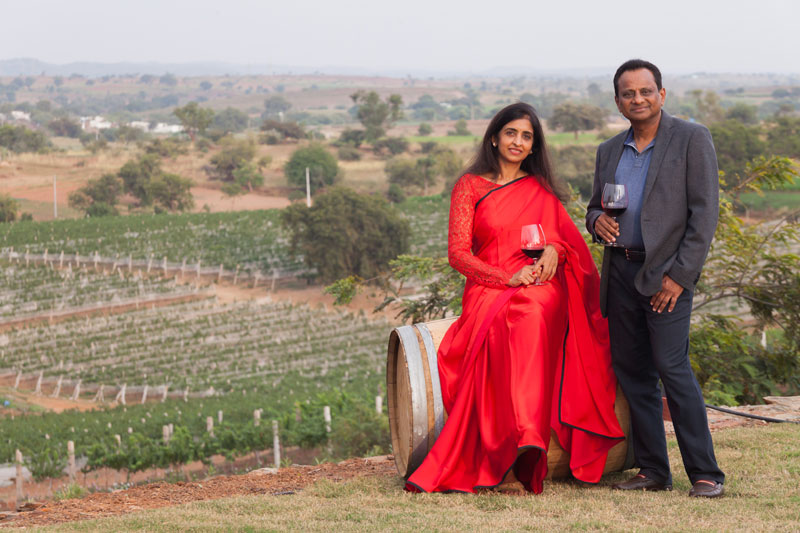
Uma is clearly the spokesperson for KRSMA. Her responses are soft, carefully modulated and deliberate, but they carry an underlying note of the steely determination and professionalism that have carried the Chigurupatis’ wines to where they stand today. Krishna Chigurupati is happy to have his wife take up the KRSMA story, coming in at appropriate moments to elaborate or highlight a point, or express views that may differ radically from Uma’s. Like the marathons they run together across some of the harshest terrains of the world, their work at the winery is an intense, carefully balanced partnership.
At Hampi Hills, there was the terroir to contend with: the iron-rich soil, so full of promise, which had attracted Krishna and Uma to the location in the first place refused to yield its qualities quite so easily as one might have hoped. Despite constant ploughing, they found themselves sifting through never ending piles of rocks and, in the rain-deficit region, “There was no humus, the alkalinity was very high,” explains Uma, “we had to keep enriching and replenishing the topsoil to prepare it for the vines.” In this ultra arid area, water had to be drawn from a valley two and a half kilometers away. They moved quickly to put various rainwater harvesting practices into place. “As a result, the water table was replenished and the farmers in the area benefitted –they began to grow cash crops,” says Krishna, justifiably pleased, showing a series of images of a greened landscape. The Chigurupatis now grow cover crops such as cowpeas, and along with the drip lines, have recently introduced a sprinkler system for irrigation to help these crops survive. “So finally, after five years of tremendous effort, we have a humus-rich topsoil and rich minerality below that brings the necessary complexity to the fruit,” says Krishna.
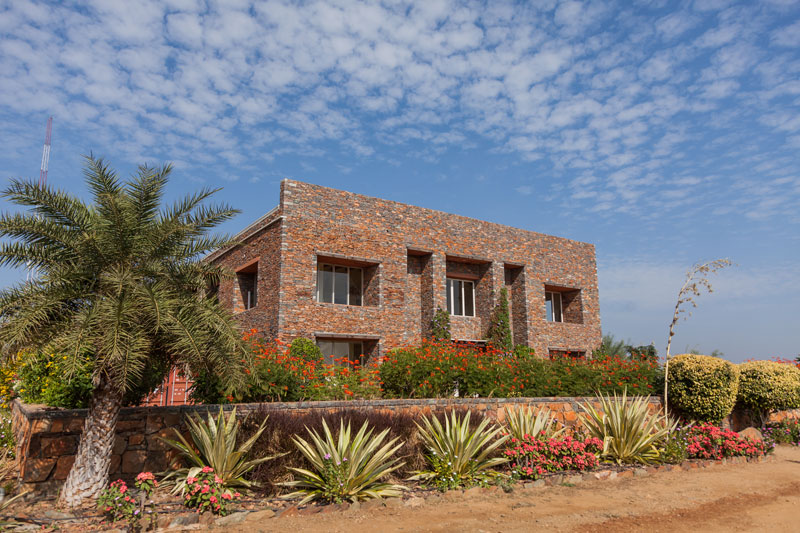 It is interesting to see how this integrated team of two engages with their roles as viticulturists and winemakers. For Uma, a microbiologist by training, viticulture comes first. Cautious, systematic and conservative in her approach to vineyard practice, she is emphatic about allowing the terroir to dictate the story that goes into the bottle. “ The experimental risk-taking comes from Krishna,” she adds with a smile. Currently, on a holding of 130 acres, KRSMA has 60 acres of planted rootstock, of which 40 are harvested, and Krishna intends to add 30 acres annually. Early experiments with grape varietals saw Merlot, Nero d’ Avola and Pinot fail, while Cabernet Sauvignon and Sangiovese established themselves well. Syrah, says Krishna, is still at an early stage. Plantings of Sauvignon Blanc and Chardonnay did well, while Muscat and Grillo met with little success. In addition to exploring the possibilities of different varietals on small parcels of land each year, Krishna, who has followed his passion for wine while maintaining his primary business in the world of pharmaceuticals, does not hesitate to push the boundaries of vineyard and winemaking practices. Having begun by irrigating vines every 2-3 days, once a suitable topsoil had been established, he reduced irrigation to every 15 days, forcing the roots to penetrate deep, bringing that valuable minerality to the fruit.
It is interesting to see how this integrated team of two engages with their roles as viticulturists and winemakers. For Uma, a microbiologist by training, viticulture comes first. Cautious, systematic and conservative in her approach to vineyard practice, she is emphatic about allowing the terroir to dictate the story that goes into the bottle. “ The experimental risk-taking comes from Krishna,” she adds with a smile. Currently, on a holding of 130 acres, KRSMA has 60 acres of planted rootstock, of which 40 are harvested, and Krishna intends to add 30 acres annually. Early experiments with grape varietals saw Merlot, Nero d’ Avola and Pinot fail, while Cabernet Sauvignon and Sangiovese established themselves well. Syrah, says Krishna, is still at an early stage. Plantings of Sauvignon Blanc and Chardonnay did well, while Muscat and Grillo met with little success. In addition to exploring the possibilities of different varietals on small parcels of land each year, Krishna, who has followed his passion for wine while maintaining his primary business in the world of pharmaceuticals, does not hesitate to push the boundaries of vineyard and winemaking practices. Having begun by irrigating vines every 2-3 days, once a suitable topsoil had been established, he reduced irrigation to every 15 days, forcing the roots to penetrate deep, bringing that valuable minerality to the fruit. 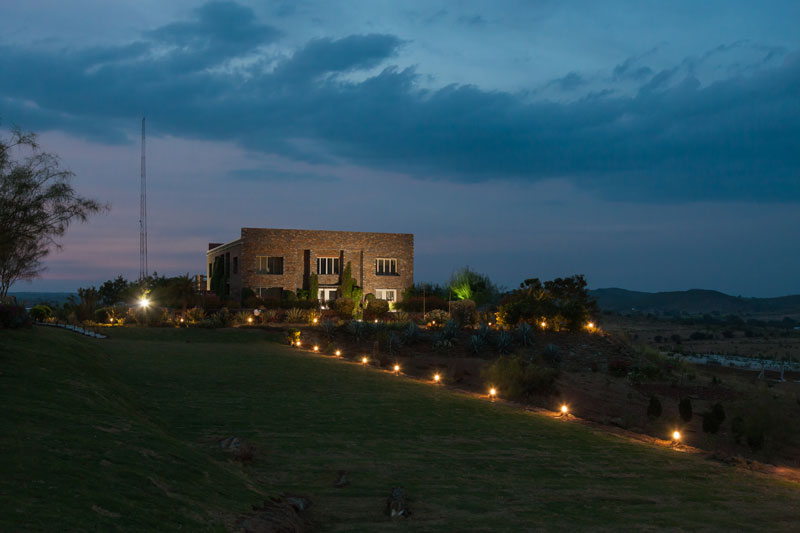
Their winemaking practices have also changed as their vision for KRSMA evolved. Krishna is possibly the only Indian winemaker, at present, who favours open tank fermentation for its plunging, and excellent extractions. The small harvests do not prevent him from experimenting on batches of fruit. He invests in the best French and American oak, and explains how he is learning the effects of toasts on wine from first hand experience. He is very pleased with the results of trials with rolling barrel fermentation at his winery. While this is considered suitable for small productions, it is also challenging, labour intensive and expensive. But he is willing to invest time, expense and effort. Everything, for him, is part of a learning process that will lead him to the best wines that he can create.
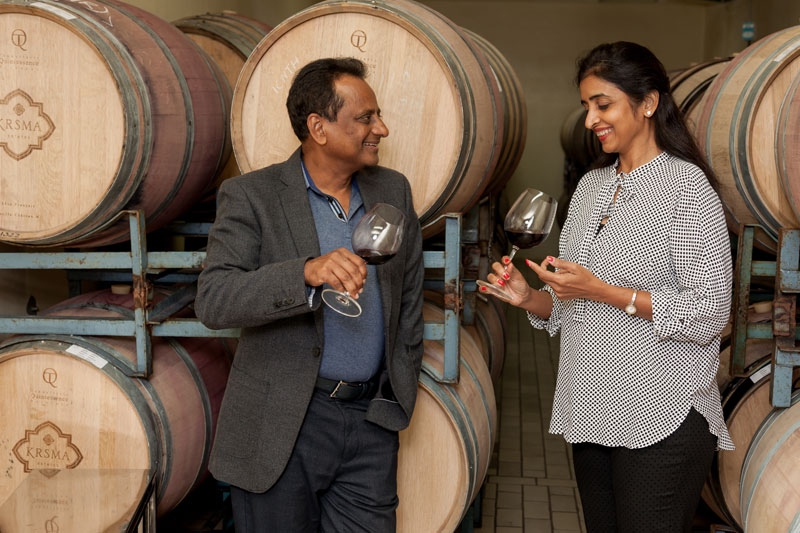
The Chigurupatis have definite ideas about the wines they wish to create, and both are completely involved in all winemaking activities: “We have simplified the process to the point where anyone can make the wine,” says Uma,
“ the idea being to allow the fruit to speak for itself, with the minimum manipulation.” Winemakers have come and gone at KRSMA, four in the short space of time since the winery was established, not least due to the unfamiliar terroir and working conditions. But the owners are completely hands on, present at every stage of the process, impressing their experience onto the wines that are being created. With each harvest, their own perceptions have changed. They look to their winemakers for technical expertise and extensive knowledge of terroir –but the final decisions, even the harvest dates, rest with Uma. Krishna’s early Bordeaux inspired inspiration veering towards heavy, oak-dominated reds has given way to a style that Uma terms “between Napa and Bordeaux, uniquely our own. Our wines have their own character, dictated by the terroir.” This may seem to be a somewhat premature claim, given the youth of this winery, but the story in the bottle bears the Chigurupatis out, and the real challenge they face today is volumes, which can barely keep pace with the demand for their wines.
 There was a sense of anticipation in Bengaluru, in September 2015, where Indian wine professionals, writers, journalist and members of the hospitality industry were invited to appreciate magnums of the 2011, 2012, 2014 vintages and a barrel tasting of the 2015 vintage of the KRSMA Cabernet Sauvignon, in a first vertical tasting. The 2012 was almost unanimously rated the highest –a vintage that has won KRSMA the gold at both the San Francisco International Wine Festival, 2015, and the Cabernets International 2015 at Paris. The missing 2013 vintage is now a familiar KRSMA story: since Krishna, Uma and the winemaking team did not quite agree on the way the wine had turned out, with a keen eye on keeping their quality consistently high, they decided to come out with a second label, K2. This uncompromising attention to quality is best summed by ex-advertising professional, Stanley Pinto: “(they) are not looking at returns on an investment, they are just looking at producing a high quality product, and being authors of this high quality product.” It is difficult to underestimate the importance of an Indian winery having produced a world-class Cabernet Sauvignon, achieved through meticulous attention to detail and no compromise on quality. Magandeep Singh, who curated the evening, had no hesitation in rating KRSMA “the finest wines India has seen yet”.
There was a sense of anticipation in Bengaluru, in September 2015, where Indian wine professionals, writers, journalist and members of the hospitality industry were invited to appreciate magnums of the 2011, 2012, 2014 vintages and a barrel tasting of the 2015 vintage of the KRSMA Cabernet Sauvignon, in a first vertical tasting. The 2012 was almost unanimously rated the highest –a vintage that has won KRSMA the gold at both the San Francisco International Wine Festival, 2015, and the Cabernets International 2015 at Paris. The missing 2013 vintage is now a familiar KRSMA story: since Krishna, Uma and the winemaking team did not quite agree on the way the wine had turned out, with a keen eye on keeping their quality consistently high, they decided to come out with a second label, K2. This uncompromising attention to quality is best summed by ex-advertising professional, Stanley Pinto: “(they) are not looking at returns on an investment, they are just looking at producing a high quality product, and being authors of this high quality product.” It is difficult to underestimate the importance of an Indian winery having produced a world-class Cabernet Sauvignon, achieved through meticulous attention to detail and no compromise on quality. Magandeep Singh, who curated the evening, had no hesitation in rating KRSMA “the finest wines India has seen yet”. 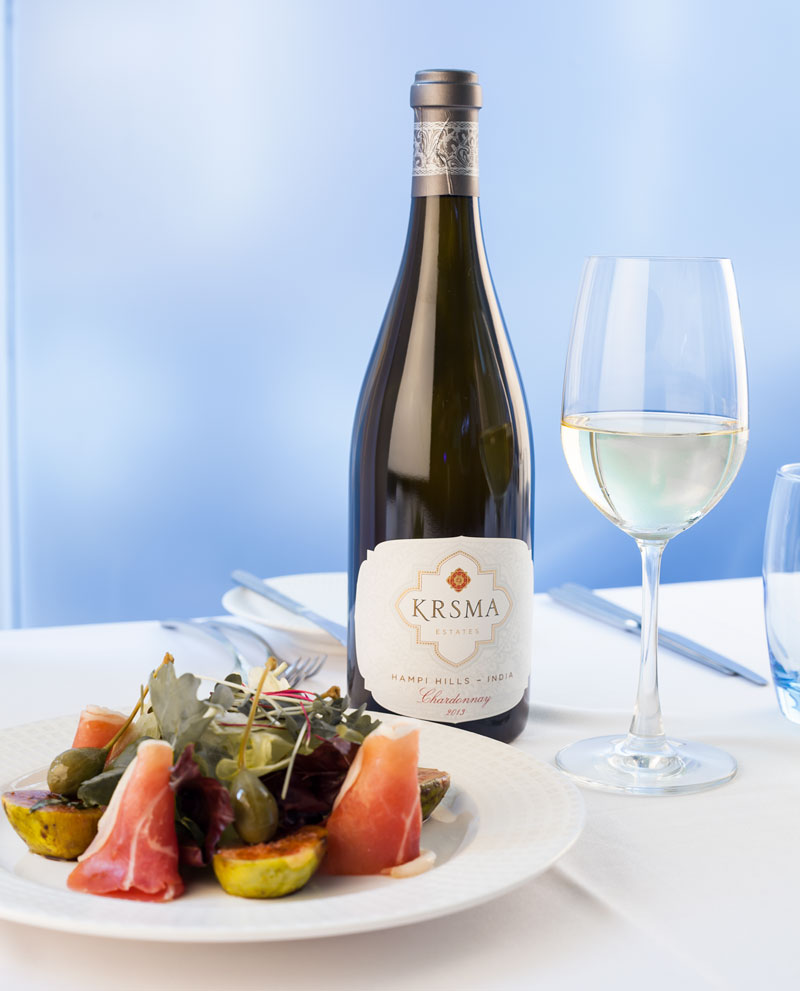
Even in retail, KRSMA strikes a different path –the wines are available only in New York, and Bengaluru. The flagship Cabernet Sauvignon retails at $50; Sangiovese and Chardonnay at $ 30 and Sauvignon Blanc at $20. In addition, the wines are available at restaurants in Manhattan, Greenwich Village and the Hamptons. “Amazing”, “Surprising” are words that you will hear frequently around KRSMA. Patrick Baugier, Bordeaux wine negociant, importer and distributor, was impressed enough to travel to Hampi Hills to the winery and commented: “ I was extremely surprised to taste an almost perfect wine mixing a great terroir and a lot of character and a “je ne sais quoi”, calling the wines “beautifully handcrafted, distinctive and unique”. The flagship Cabernet Sauvignon drew this response –“This Hampi Hills wine has that region’s stony minerality. Immaculate, tart red currant and cherry flavors, still tight and young, are wrapped with lightly toasty notes from French barrel aging. A very promising wine and producer.”
Reactions to the wines have been both appreciative and filled with astonishment. Rachel Burkons, Associate Publisher of The Tasting Panel Magazine wrote: “KRSMA Estates is proving that there is still unexplored terroir with potential to produce world-class wines,” while Meridith May noted the “unique character and impeccable balance”. None of these accolades have come easy. The perception of Indian wine is still less than favourable, and Krishna continues to spend many hours persuading people in the trade to taste the wines he produces: “I sit at bars, speak to bartenders, go to restaurants and meet chefs and sommeliers” he says, painting a scene reminiscent of the early Napa days, when some now world-renowned producers went from hotel to hotel, pouring out glasses of wine for people to taste.
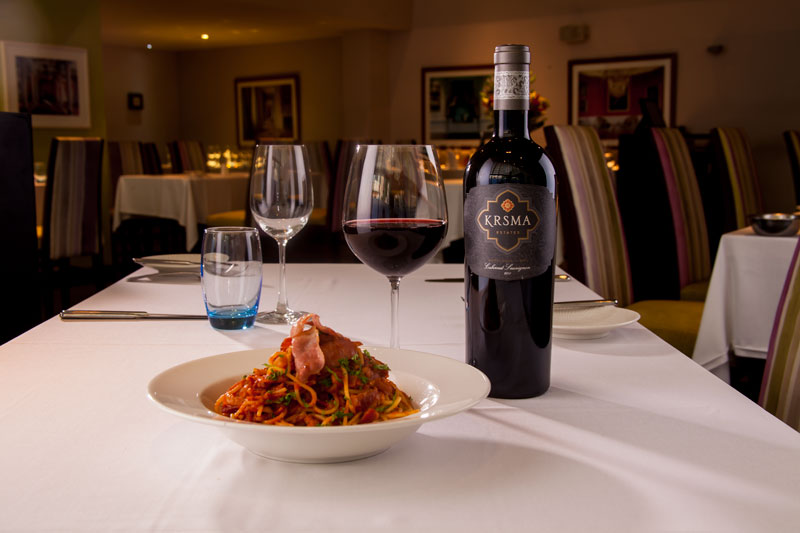
Eight years of trial, error and total commitment means that the Chigurupatis are well placed to assess their journey so far. A deep respect for the individuality of the terroir has led to constant innovation, and re-assessment of their practices and philosophy. “The quality of the fruit was way beyond our expectations,” observes Uma, “ and with what we are putting in, we can expect even better in the future. Conservative as she is in her judgment, Uma is convinced that KRSMA is capable of making exceptional whites –borne out by their 2013 Sauvignon Blanc that has won a gold at the San Francisco International Wine Competition in 2014, amongst other vintages and awards. With the KRSMA reds, she anticipates medium-bodied wines with good minerality.
The Chigurupatis have come a long way from the day they shared their wines –somewhat tentatively –with winemakers like Randy Dunn, John Duval, Ambrogio Folonari and Armin Diel. Their reactions –“we don’t believe this is Indian wine” –are now part of the KRSMA journey. According to the Chigurupatis, taking ownership of the terroir, understanding the growing conditions, soil and fruit and perseverance has brought them this far. “My advice to anyone wishing to make wines in India would be to ask them go out, understand the land, the soil, the fruit –and only then call in the winemaker. This is what we have learned at KRSMA.” “Krishna wanted to put Indian wines on the map of the wine world,” says Uma with a warm smile, leaving the rest unspoken. To which Krishna adds, “This is just the beginning.”
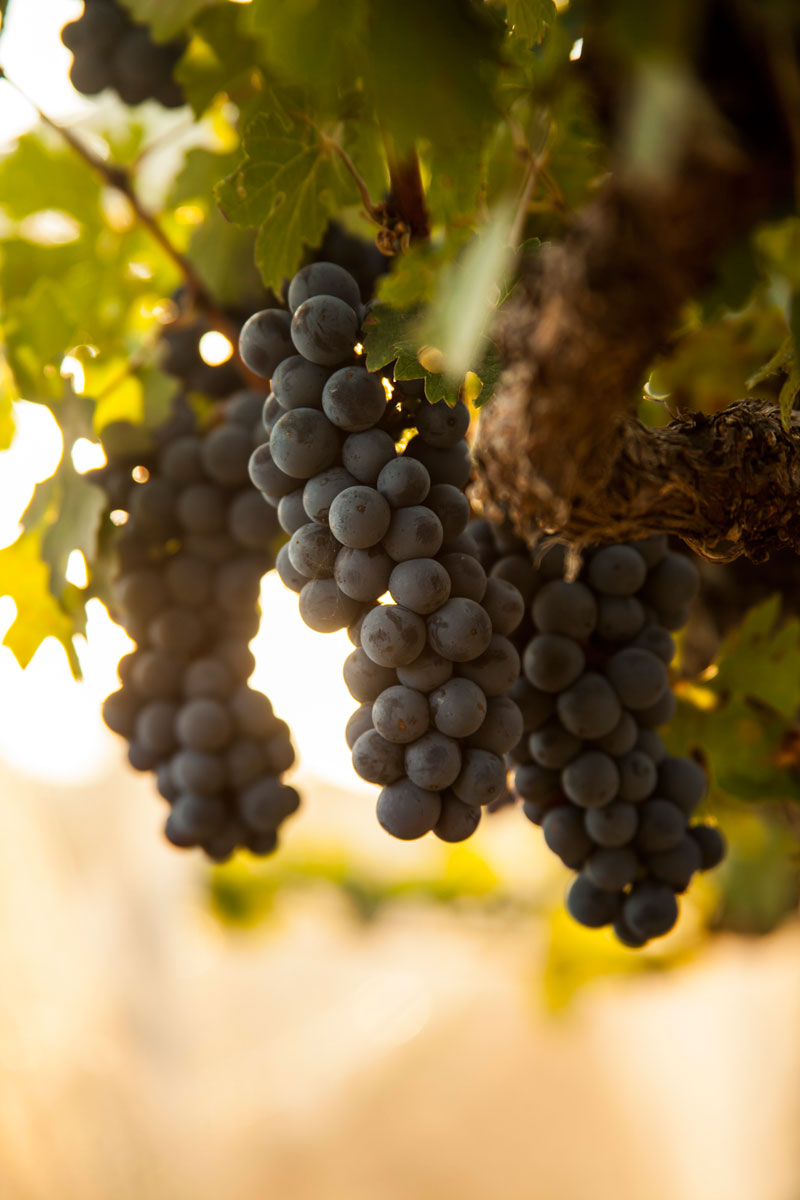
This article was published in Sommelier India Magazine, Vol.11, Issue 1, Feb-March 2016
Image Credits: KRSMA Wines

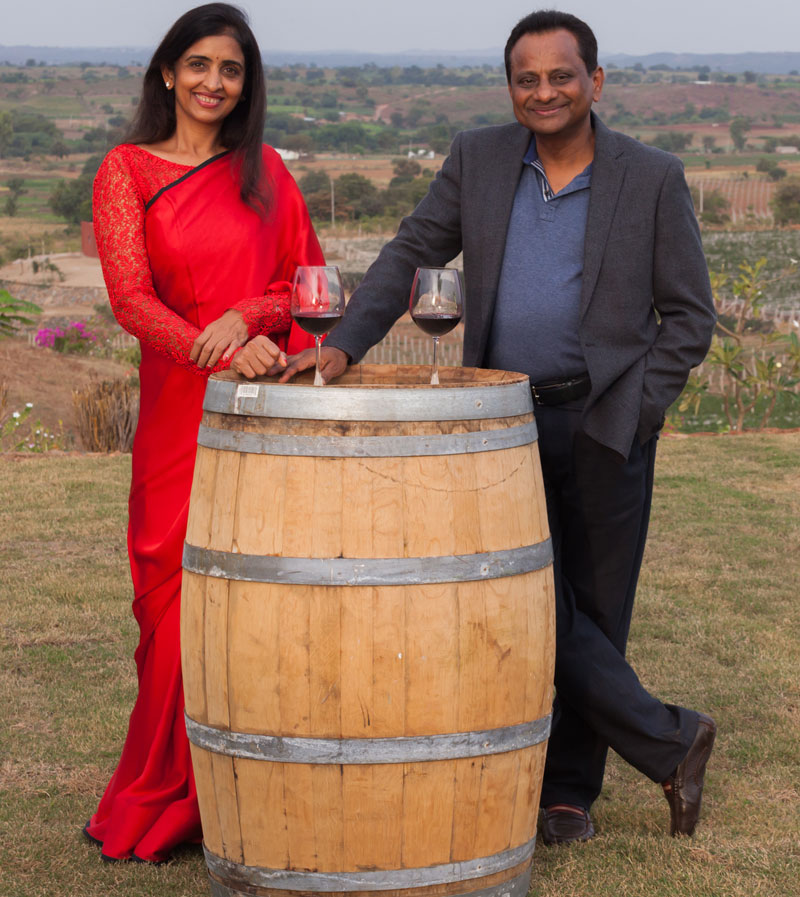
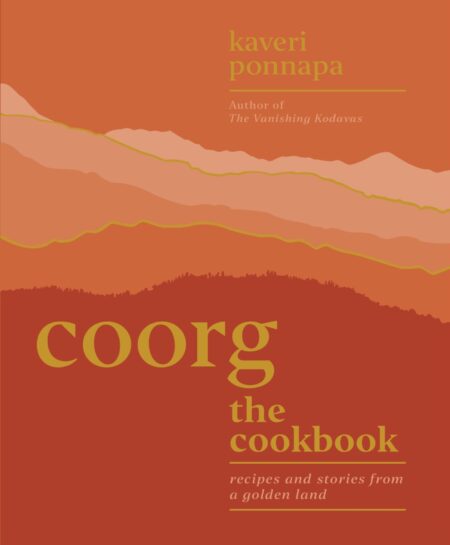


I was awarded by a friend from India by a bottle of Krsma Cabernet Sauvignon 2014 in 2019, I put in my cellar without too many expectation as I am not familiar with Indian wines, to be honestly with very low expectation. During the quarantine I decided to uncork the bottle to enjoy with a good steak and my lovely wife, for our surprise the wine is spectacular, it is above big labels from USA, Australia, South Africa or Europe, it is a high end wine, opulent in the acidity and elegant on the palate; my only one regret is that I had only one bottle, not sure if I can buy in Singapore.
After reading this excellent article I can understand why the wine is amazing, congratulation for the wine makers, be proud of your history and wine, the passion that you put to grow up your business can be enjoyed in your wine.
Leonel Jose de Costa, thank you very much for reading—I do hope that you get a few more bottles of the Krsma Cabernet Sauvignon. Do check out the Sauvignon Blanc too, it’s quite a surprise. Kaveri
Great read. Now I have to sample their wines when I am in India next.
Excellent
The article was a delightful read – thank you. Despite being ignorant about wines I thoroughly enjoyed reading Kaveri’s article. Learnt a lot. Kudos to the author and the Super wine making duo. All the best